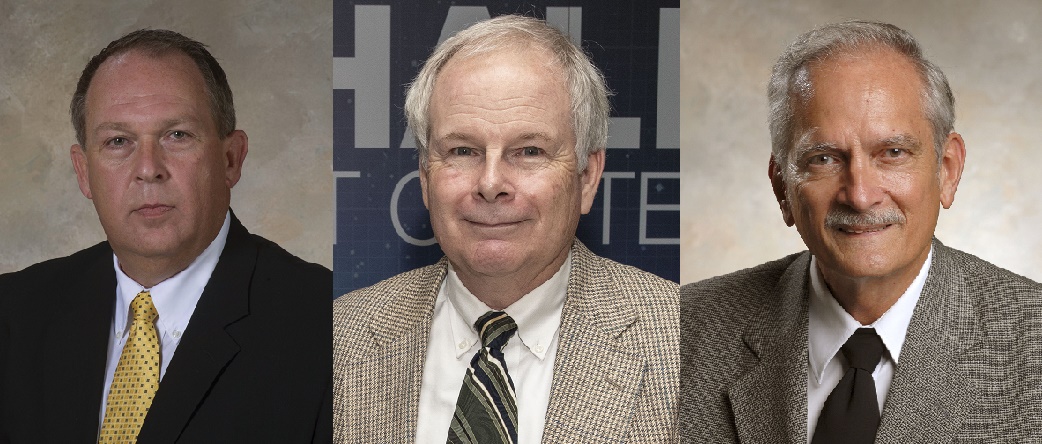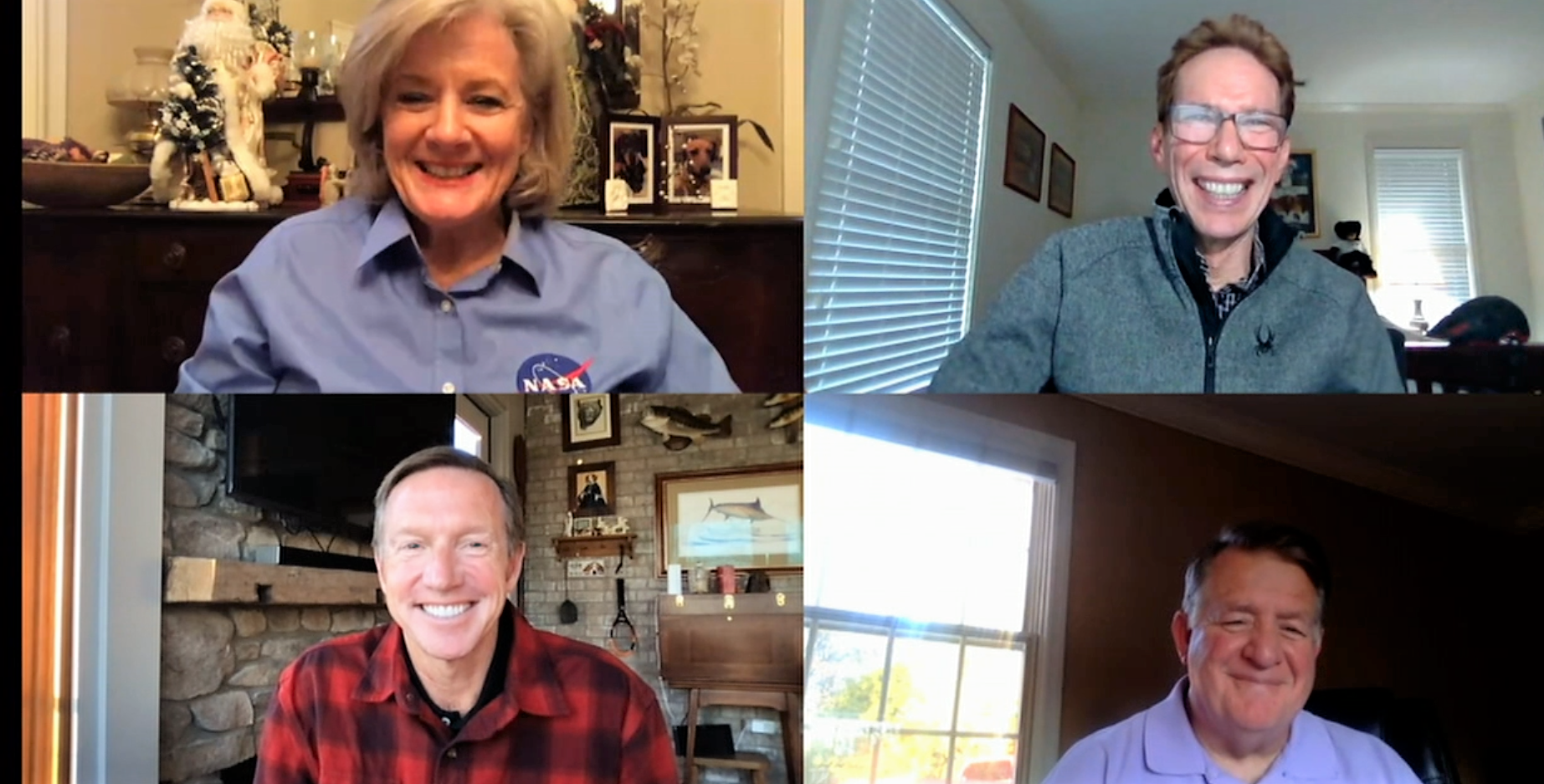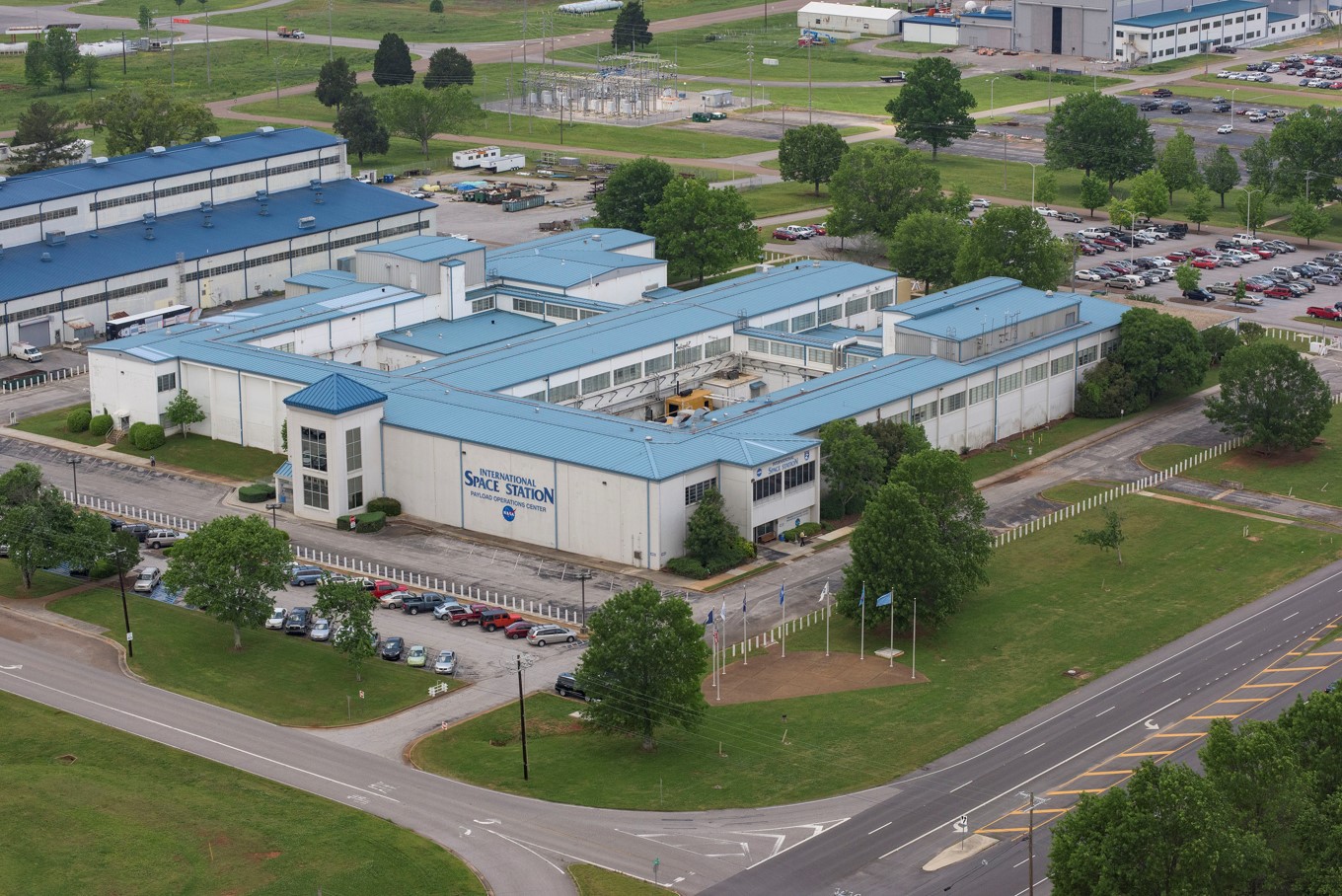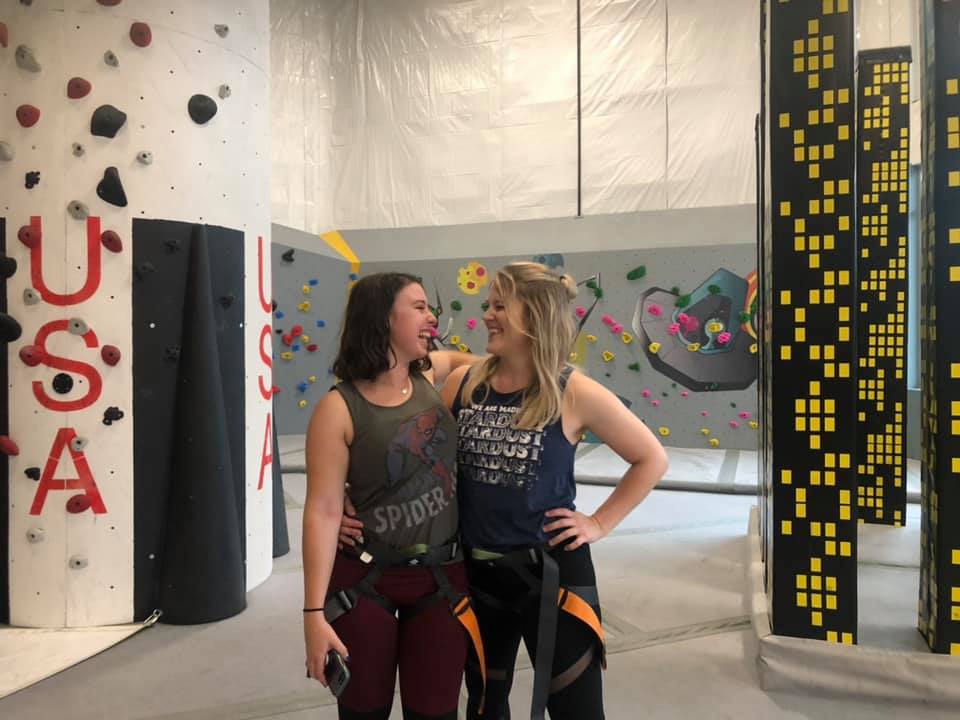In This Week’s Star
- Seven Marshall Honorees Awarded Agency Distinguished Service Medals
- Marshall Leaders Host Last Live Virtual Town Hall of 2020
- NASA Makes Progress On SLS Green Run Testing
- Marshall Oversees Mentor-Protégé Agreement Signing Between Boeing, Southern University
- Mission-Essential: The Huntsville Operations Support Center
- Marshall Early Career Organization Promotes Leadership, Celebrates Family
- Marshall has ‘HUNCH’ about Students in Georgia County
- Marshall Association Concludes 2020 Speaker Series, Announces 2021 Board
- This Week in NASA History: STS-61 Lands – Dec. 13, 1993
Seven Marshall Honorees Awarded Agency Distinguished Service Medals
By Rick Smith
On Dec. 15, NASA Deputy Administrator Jim Morhard led a virtual awards ceremony to honor recipients of NASA Distinguished Service Medals and Distinguished Public Service Medals across the agency – including seven honorees from NASA’s Marshall Space Flight Center.
The medals are NASA’s highest form of recognition for government and non-government workers who – through distinguished service, ability, or vision – have contributed to NASA’s advancement of the goals and interests of the nation. Individual achievements and contributions demonstrate a level of excellence with a profound or indelible impact on the agency’s mission success.
“NASA continues to do the impossible” thanks to the significant and sustained efforts of this year’s honorees, Morhard said. “What you do is extraordinary, and we’re so appreciative. It’s our hope that your accomplishments will motivate and inspire more people to do the same.”
Honorees also received congratulations from Joel Montalbano, International Space Station program manager, and via a recorded message by NASA Flight Engineer Kate Rubins, now in orbit as part of the space station’s Expedition 64 crew.
“In a year in which NASA has accomplished so much, it’s a great pleasure to recognize and celebrate your achievements,” she told recipients. “On behalf of my crewmates, thank you for all your contributions to NASA, and my congratulations to all of you.”
Marshall government employees who received the Distinguished Service Medal were Charles “Mark” Allen, a reliability and quality engineer who leads safety and mission assurance for the Space Launch System Boosters Branch Office; James Frees, deputy chief counsel in the Office of the Chief Counsel; Michael Houts, lead engineer for nuclear propulsion and power in the Science & Technology Office; and Robert Rutherford, Transportation and Logistics Engineering Group lead.
Distinguished Public Service Medals – the equivalent award for non-government workers who support NASA’s programs and missions – were awarded to Alan Joynt, a Bastion Technologies contractor and quality engineer supporting the Space Launch System core stage; Dr. Joseph Musick, an InoMedic Health contractor who serves as Marshall’s medical director; and Ray Sparks, a retired COLSA contractor and systems engineer supporting Marshall’s Office of Center Operations.
“Our people are the most important part of what we do, and the folks we’re celebrating today are exceptional members of our team,” said Marshall Director Jody Singer, who spoke prior to the Marshall presentations.
Allen was awarded for conceiving and implementing an innovative, cost-efficient manufacturing process to improve the quality of spaceflight hardware – now in use in building SLS propulsion elements. Frees was recognized for career-long leadership and service as a NASA attorney; and Houts for leading development of space nuclear power and propulsion capabilities to enhance national security and power robust, next-generation human space exploration. Rutherford was honored for leading innovative partnerships to ensure successful transportation services benefiting mission-critical programs across NASA.
Joynt was recognized for exceptional quality engineering support that helped lead to the successful delivery of the first SLS core stage; Musick for sustained, exceptional leadership of Marshall’s Medical Center services; and Sparks in recognition of 55 years of distinguished public service, including his contributions to the establishment and ongoing success of mission operations at the Huntsville Operations Support Center, which houses science communications teams who provide round-the-clock support for International Space Station crews.
The online ceremony also included a presentation of the space station anniversary video “A Bridge Above.”
More information about the ceremony and awards is available here.
Smith, a Manufacturing Technical Solutions employee, supports Marshall’s Office of Strategic Analysis & Communications.
Marshall Leaders Host Last Live Virtual Town Hall of 2020
By Stephanie Kelley
Leaders at NASA’s Marshall Space Flight Center held their third live virtual town hall meeting Dec. 9. Marshall Director Jody Singer, Deputy Director Paul McConnaughey, Associate Director Steve Miley, and Associate Director, Technical, Preston Jones provided administrative updates, shared highlights from this year’s program and mission successes, and answered questions submitted by team members.
With a recent on-site case of COVID-19 suspending Space Bar operations for a week, and a personal experience with the disease, Singer focused on the importance of Marshall’s workforce remaining vigilant about COVID-19 safety. She strongly urged those who work on-site to follow Marshall’s Safe at Work Protocol.
“I can’t stress enough, as we’ve said many times, the three Ws: wear a mask, watch your distance, and wash your hands,” she said.
Singer shared her pride in the workforce overcoming many obstacles this year. She highlighted the successful transportation and installation of the Space Launch System core stage into the test stand at Stennis Space Center. Six of eight Green Run tests have been completed successfully. Up next is the wet dress rehearsal, which will thoroughly check out the core stage’s complex systems as they are exposed to cryogenic propellant for the first time.
Singer highlighted additional NASA and Marshall milestones including the delivery of Artemis I hardware to Kennedy Space Center for integration and stacking, the assembly of the Artemis II Orion stage adapter at Marshall, and the successful Flight Support Booster-1 test in Utah.
“Not only are we supporting Artemis I,” she said, “but we’re supporting Artemis II and III, and ready to keep the cadence going to be able to support all the initiatives that we have leading up to the 2024 Artemis III launch.”
Singer praised the Human Landing System Program’s work, noting that its next milestone in 2021 will be choosing the company that will help NASA return humans to the Moon.
A recent “huge win” for the center, Singer noted, was the selection of the Marshall-led Solar Cruiser as a technology demonstration mission that will share a ride to space with the Interstellar Mapping and Acceleration Probe in 2025. Solar Cruiser will demonstrate the use of solar radiation as a propulsion system.
Singer also congratulated the Artemis III Science Definition Team, including Marshall’s Chief Scientist Renee Weber, a key contributor to defining the agency’s science priorities.
“This is another reason why Marshall Space Flight Center is in the right spot,” Singer said. “Working in science, what we do in technology, and what we do in exploration, it all connects and supports each other.”
Singer congratulated Centennial Challenges for concluding another year of successful competitions and for receiving the green light for three new challenges in 2021, one of which – the Break the Ice Lunar Challenge – Marshall will manage.
In addition, she acknowledged the hard work of Marshall’s Payload Operations Integration Center for its support of the International Space Station, which recently celebrated its 20th year of continuous human presence.
Marshall also played a key role in two Commercial Crew Program launches to the space station.
“We have over 100 engineers who have been instrumental in helping Demo-2 and Crew-1,” Singer said, “and helping all of our commercial partners be ready and able to launch.”
Singer recognized the hard work of mission support personnel, including the team that recently won Marshall’s Small Business Administrator’s Cup for the seventh time.
McConnaughey, Miley, and Jones answered questions on topics ranging from center availability and prioritization of a COVID-19 vaccine to Redstone Arsenal’s new automated gate access system.
Miley noted that while there is currently no agencywide vaccine policy for distribution to NASA employees, center leaders are maintaining ongoing communication with NASA leadership and the Office of the Chief Health and Medical Officer, as well as state and local officials. Each state is creating its own priorities for vaccine distribution, and NASA is currently not on a priority list.
Singer closed by recognizing the significant contributions made by Jones, who is retiring after nearly four decades at Marshall.
Kelley, a Media Fusion employee, supports Marshall’s Office of Strategic Analysis & Communications.
NASA Makes Progress On SLS Green Run Testing
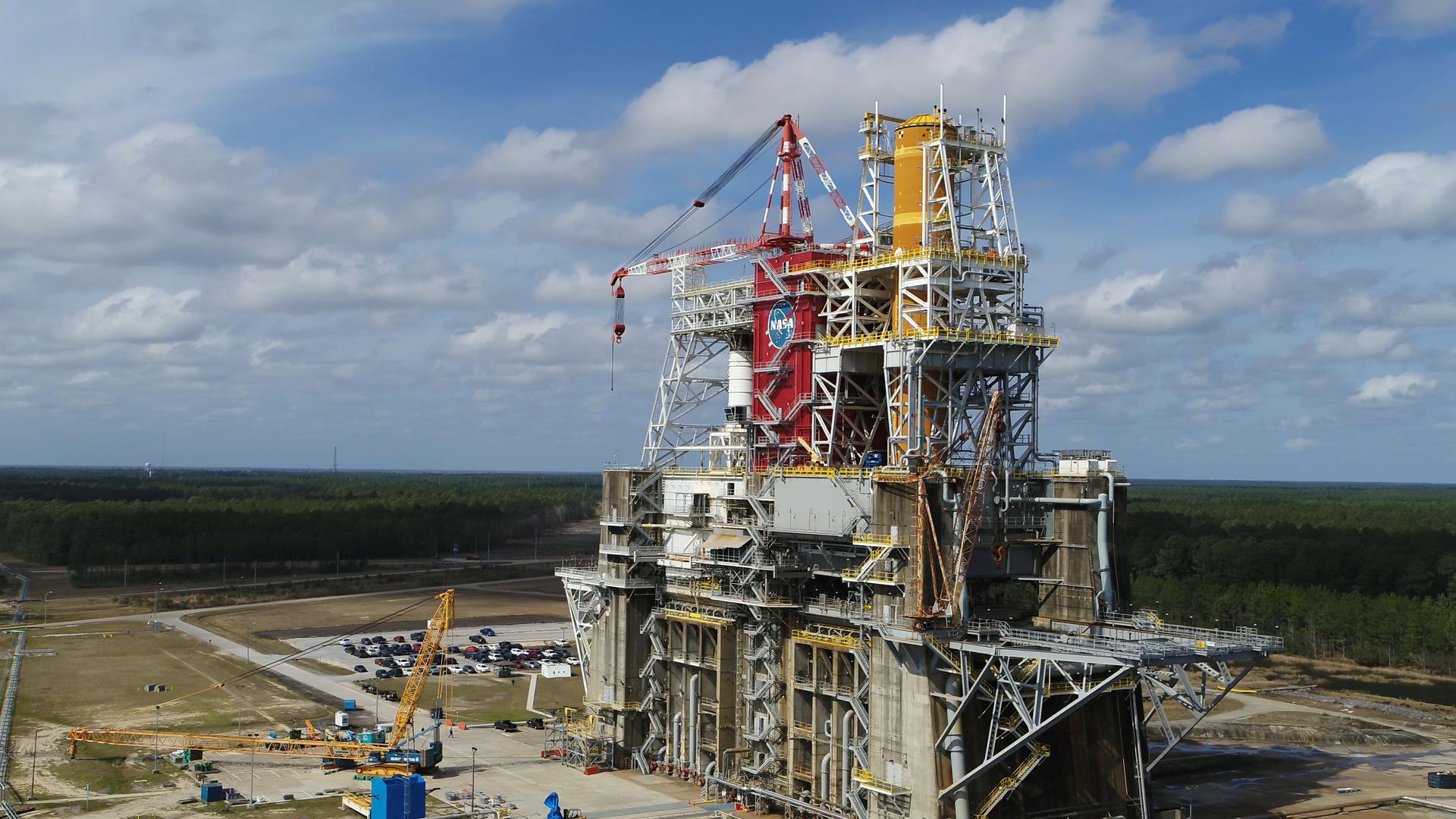
The Space Launch System core stage is installed in the B-2 Test Stand at NASA’s Stennis Space Center for the Green Run test series. After refining the procedures for test operations, NASA is planning to conduct the seventh of eight Green Run tests – a full wet dress rehearsal, which involves loading and draining the stage’s two immense propellant tanks of more than 700,000 gallons of cryogenic propellants. Following a successful wet dress rehearsal test, teams will begin preparing for the final test of the Green Run series: the SLS hot fire. For the latest on Green Run, visit the Artemis blog and the Green Run website. (NASA)
Marshall Oversees Mentor-Protégé Agreement Signing Between Boeing, Southern University
By Rick Smith
On Dec. 15, business leaders at NASA’s Marshall Space Flight Center hosted a virtual event to recognize the signing of a new NASA Mentor-Protégé Agreement between representatives of the Boeing Co. and Southern University and A&M College in Baton Rouge, Louisiana.
The 18-month agreement will aid Boeing in delivering hardware for NASA’s Space Launch System, set to launch Artemis Generation crews on new Moon missions by 2024. Boeing is NASA’s prime contractor for the design, testing, and production of the SLS core stage and development of the flight avionics suite. Boeing, in turn, will help Southern University – the first federally designated historically Black college/university with which Boeing has entered into a Mentor-Protégé Agreement – win new federal contracts and make beneficial connections across the aerospace industry.
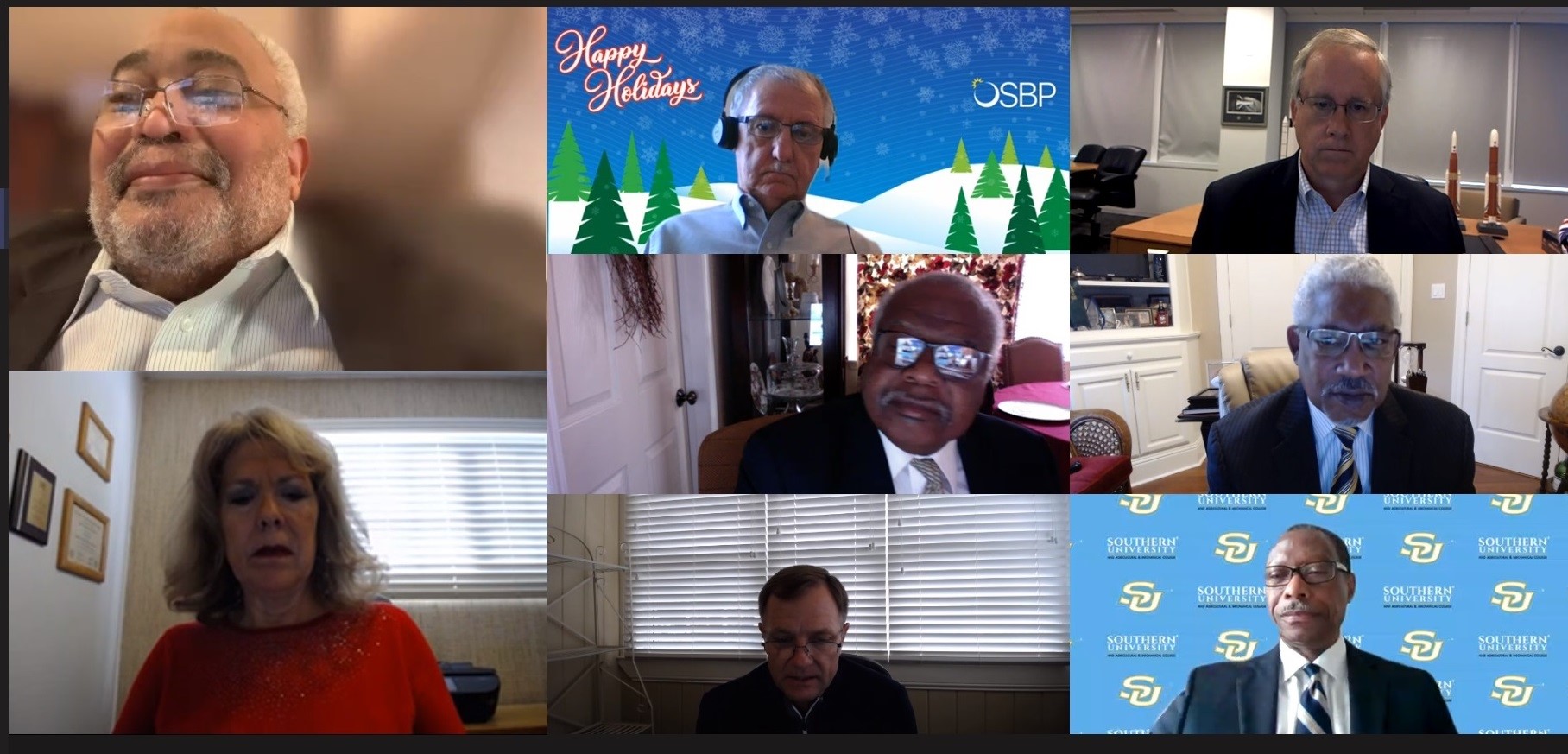
Additionally, the agreement provides a pipeline for new engineering talent at NASA and Boeing production sites, including NASA’s Michoud Assembly Facility, where SLS rocket stages and other elements are manufactured.
“For the past 60 years, talented, engaged, diverse human beings have been the driving force behind everything we do,” said Mentor-Protégé Program manager David Brock, Marshall’s small business specialist for more than three decades. “The NASA Mentor-Protégé Program nurtures the agency’s pioneering tradition and enables successful pursuit of America’s goals in space.”
Under Brock’s leadership, the Marshall team has guided 18 past and current Mentor-Protégé Agreements since the program’s creation by NASA’s Office of Small Business Programs in 2008. In 2019, NASA appointed Marshall to lead the program for the agency. To date, 41 total agreements have been signed and overseen across NASA’s 10 field centers.
“When you undertake a Mentor-Protégé agreement under NASA’s guidance, you get to build some really special things,” said John Shannon, vice president of the SLS program at Boeing. “We’re building a rocket more powerful than the Saturn V, a human-rated vehicle [which] is going to take crews back to the lunar surface and eventually on to Mars.”
Working in partnership with Southern University and NASA, Shannon added, “makes the program that much stronger and allows us to deliver a better product – while also inspiring the students and faculty in such an incredible program.”
Ray Belton, chancellor of Southern University and president of the Southern University System, said the agreement is a landmark for the university and for minority-serving institutions around the country.
“I’m excited about this opportunity, and we’re grateful for the confidence that NASA and Boeing have extended to Southern University to partner with them on this most noble mission,” Belton said.
Participants in the online event also included Glenn Delgado, associate administrator for NASA’s Office of Small Business Programs; Jason Detko, director of Marshall’s Office of Procurement; Brad Bruce, manager of global supplier diversity for Boeing; and James Ammons, executive vice president and vice chancellor of Southern University.
Historically Black colleges and universities are minority-serving U.S. institutions established before 1964 with the primary purpose of educating Black students.
The agreement between Boeing and Southern University was approved in June, but a planned in-person signing was put on hold in keeping with NASA COVID-19 safety protocols.
Smith, a Manufacturing Technical Solutions employee, supports Marshall’s Office of Strategic Analysis & Communications.
Mission-Essential: The Huntsville Operations Support Center
By Taylor Goodwin
NASA’s Marshall Space Flight Center is home to one of the agency’s key capabilities – the Huntsville Operations Support Center, or HOSC, a multimission facility capable of distributing secure mission voice, video, and data anywhere in the world.
The HOSC has advanced systems that allow users from across the world to simultaneously access research experiments, mission, and science operations data while still providing 24/7 support to crew and International Space Station operations.
Additionally, the HOSC has the capability to support all phases of missions, including planning, testing, simulating, prelaunch, launch, and flight operations, as required by the various programs – International Space Station, Commercial Crew, and NASA’s Space Launch System rocket – currently using the building’s facilities.
In 2001, an addition to the facility known as the Payload Operations Integration Center began round-the-clock operations as the primary science command post for the space station. From here, the payload operations team coordinates all U.S., European, Japanese, and Canadian scientific commercial experiments on the station, synchronizes payload activities of international partners, and directs communications between station crew members and researchers around the world with onboard experiments.
“For almost 20 years, Marshall’s payload operations facility has served as the nerve center for all the science that occurs daily on the space station,” said Dwight Mosby, Payload Mission Operations Division manager. “We are mission-critical in the agency’s execution of science research.”
The Payload Operations Integration Center also houses the Laboratory Training Complex, which provides a hands-on training environment to support science operations aboard the space station and simulation rooms that are used to prepare for space station expeditions.
For the Commercial Crew Program’s Demo-2 launch May 30 and Crew-1 launch Nov. 15, members of the Marshall team were on console in the HOSC monitoring launch conditions and data via their headsets and voice loops to communicate with flight control teams at NASA’s Kennedy Space Center, NASA’s Johnson Space Center, and SpaceX in Hawthorne, California.
“The HOSC team has really stepped up to support the Commercial Crew Program,” said Marshall’s Steve Gaddis, deputy manager for the Commercial Crew Program’s Launch Vehicle Systems Office. “Marshall’s HOSC support team was vigilant for the preparation, lessons learned, simulations, and upgrades required to make the agency’s SpaceX Demo-2 and Crew-1 missions a success.”
The HOSC is also supporting the SLS core stage Green Run test series – an integral part of the agency’s Artemis program, which will send the first woman and next man to the Moon by 2024 – at NASA’s Stennis Space Center. The eight-part series is a comprehensive test designed to bring the rocket’s immense core stage to life for the first time.
Members of the HOSC team have travelled to Stennis to install multiple servers that allow live transmission of Green Run test data from Stennis’ Test Control Center to the HOSC, where team members will monitor telemetry for any anomalies and provide critical insight to the SLS main control team. From the HOSC, the test data will travel to Kennedy, where the launch control team will monitor the telemetry and voice data from the center’s firing room, giving the flight controllers an opportunity for real-time simulation support as the SLS core stage is filled with propellant – a test case known as the wet dress rehearsal – and the engines are powered on for the first time in an eight-minute hot fire test.
“The robust remote architecture built for the Payload Operations Integration Center allowed HOSC team members to access testing data from their telework environments in the face of COVID-19,” said Kelvin Nichols, SLS task lead at Marshall. “This capability has allowed the SLS engineering support team to be as safe as possible throughout testing procedures.”
Team members will follow Marshall guidance to execute the wet dress rehearsal and hot fire supported on-site within the HOSC. From the HOSC, for every Artemis launch, the engineers in the support center are laser-focused on the propulsion system – the engines, boosters, and core stage that will produce 8.8 million pounds of thrust to get to orbit, and the flight computers that control the rocket’s journey. After the boosters and core stage drop away, their focus will be on the in-space stage that will fire its engine to speed up Orion so it can reach the Moon.
Looking forward, the HOSC is building operational flexibility, carving out even more operational space, and preparing to support small satellite missions – all activities to enable human exploration to the Moon and Mars.
Read the complete feature here.
Goodwin, a Media Fusion employee, supports Marshall’s Office of Strategic Analysis & Communications.
Marshall Early Career Organization Promotes Leadership, Celebrates Family
By Rick Smith
In NASA parlance, the acronym MECO most commonly means “main engine cut off,” the shutdown of a primary or first-stage rocket engine once its job is completed.
At NASA’s Marshall Space Flight Center, it can also signify ignition of a different kind of engine – one with the potential to boost the careers of new hires and young professionals whose high-flying missions are just getting underway.
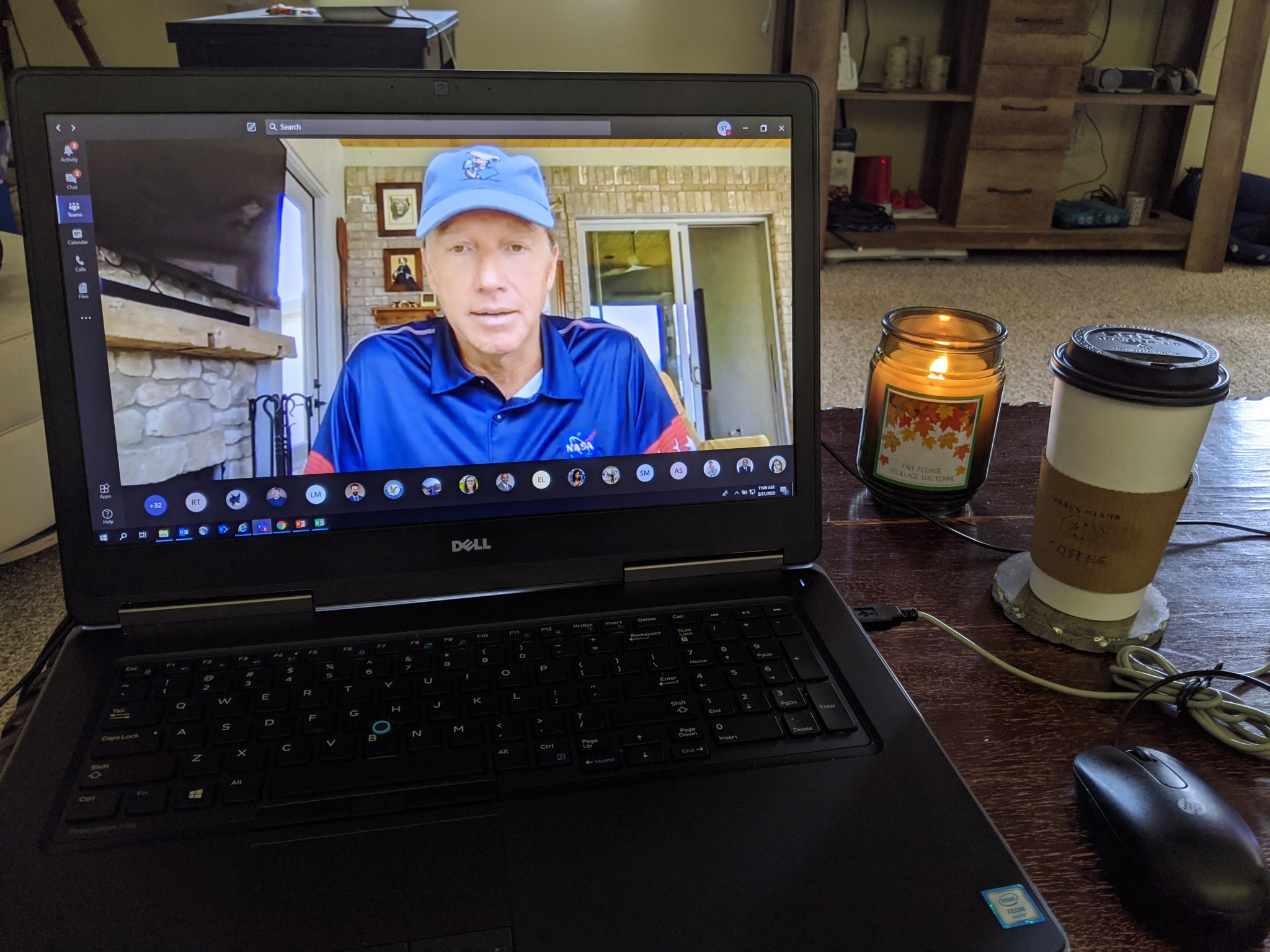
The Marshall Early Career Organization is a self-organized association uniting the center’s newest civil service employees and contractors. The group strives to engage and inspire new members of the Marshall workforce, to nurture their personal and professional growth and acclimate them not just to NASA’s pace, culture, and opportunities, but to those of Marshall’s home city of Huntsville and the entire North Alabama region.
“We want every new member of the team to flourish, to have options and top-down support and a network to lean on as they forge their new careers,” said organization council chair Chris Schultz, a Marshall meteorologist who joined NASA in 2015. “We also want them to feel personally valued and included as part of the Marshall family.”
Family is at the heart of the group’s values. “MECO is a diverse and all-inclusive group, not just in terms of race, ethnicity, gender, and orientation, but equally welcoming to all professions and all specialties tied to the work conducted at Marshall,” said Loucious Hires, director of the Office of Diversity and Equal Opportunity.
Larry Mack, deputy director of Marshall’s Office of Human Resources, agreed. “This organization is using every talent, asset, and opportunity to make the Marshall workplace the best it can be – where everyone understands their role, where there’s real pride and accountability, and where we engage openly and positively in pursuit of our goals.”
The organization has some 500 active members, a significant bump from its modest origins in 2014 as a dozen-member employee cohort in the Engineering Directorate. With the encouragement of senior Marshall leadership, it was expanded in 2017 to include contractors and to welcome others who support NASA’s mission at Marshall. The group is run by a volunteer council selected from among its members.
“It’s an all-hands-on-deck approach,” Schultz said, “all of us stepping up to support and uplift new team members, so they’ll have their own turn to pay it forward, guiding and molding future generations of NASA early career professionals.”
Though new college graduates and student interns make up a healthy percentage of MECO membership, the organization’s focus is not a specific age group but anyone new to NASA and the aerospace industry. And it’s not a short-term benefit – membership is good for the first 10 years of their service to the center.
“Gaining real knowledge takes time,” said council member Michelle Hui, a Marshall astrophysicist who studies gamma ray bursts and other celestial phenomena. “I’ve been here five years now, and I’m still making new connections and learning new things.”
The council receives a monthly list of new civil servant hires from the Office of Human Resources and works with contract firms to keep abreast of their latest employees. Each new team member is welcomed and invited to join the group. The same is true for Marshall interns, who are invited to all MECO professional and social events. The council also recruits speakers from across the center, among industry partners, and within the Marshall Retirees Association, which offers mentoring as part of its ongoing mission to sustain the NASA legacy.
MECO’s greatest appeal may be its focus on the social lives of its members, especially those new to the Huntsville area.
“Helping workers put down roots and establish themselves in the community is just as critical as honing one’s professional skills,” said council member Jodi Turk, an aerospace engineer in the Engineering Directorate’s Thermal Branch. “We’re not just worker bees; we’re human beings, hailing from different birthplaces and backgrounds, bringing to bear different perspectives and ambitions. MECO is designed to honor and foster that.”
The MECO council recognized early the challenges associated with the COVID-19 pandemic, and in keeping with NASA safety protocols moved all speaking engagements and social activities online. They also introduced discussions about health, safety, and adjusting to “the new normal,” with presentations by Terry Sterry, who oversees Marshall’s Employee Assistance Program, and Mat Park, an organizational development specialist in the Office of Human Resources.
Prior to quarantine restrictions, the group organized a variety of monthly social activities: sporting events, river tubing excursions, and tours through the local holiday light display at the Huntsville Botanical Garden. This year, they’ve held virtual Halloween costume contests, online trivia nights, and other remote opportunities for members to keep in touch and unwind after hours.
“The organization has created a healthy, professional, fun, and accepting environment that gives me so much hope for our future as a center and an agency,” said council member Sarah Triana, an engineer in Marshall’s Advanced Concepts Office. “MECO is truly leading by example.”
Interested team members can learn more about MECO on SharePoint and Facebook.
Smith, a Manufacturing Technical Solutions employee, supports Marshall’s Office of Strategic Analysis & Communications.
Marshall has ‘HUNCH’ about Students in Georgia County
By Lauren Lambert
The HUNCH – High school students United with NASA to Create Hardware – Program has expanded its partnership opportunities to the Dade County, Georgia, school system in Trenton. Students will increase their advanced manufacturing capabilities by producing super-strength carbon fiber elements for NASA, the International Space Station, and future deep space products.
HUNCH was designed to inspire students through project-based learning. Students have opportunities to participate in six HUNCH focus areas — design and prototyping, software, hardware, sewn flight articles, video and media, and culinary arts.
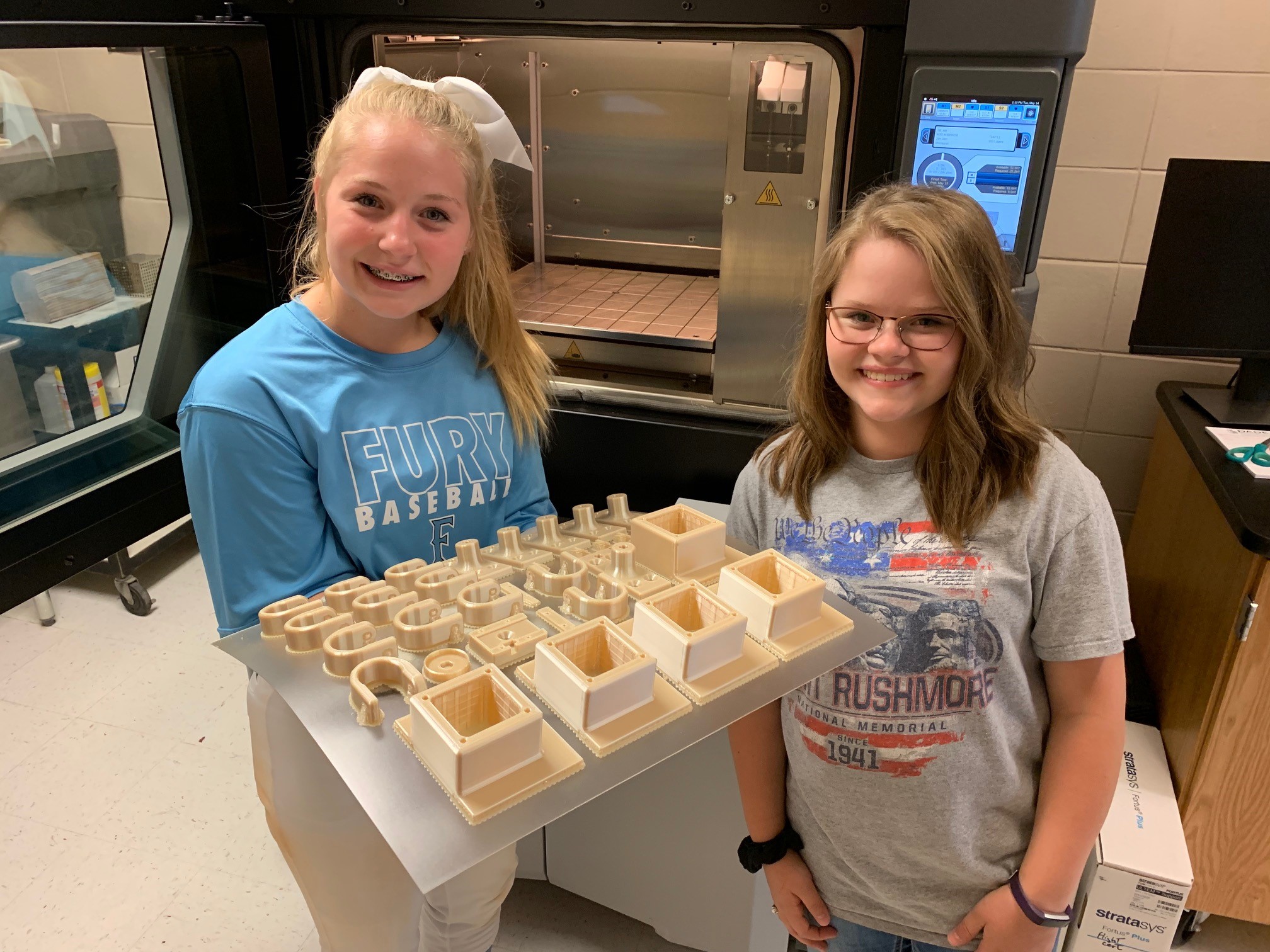
“The astronauts will put in requests for things that they need on the space station, and essentially it is a wish list that gets cast out to school systems,” said Whitney Young, HUNCH Space Act Agreements manager at NASA’s Marshall Space Flight Center.
Schools can participate in HUNCH by meeting a set of minimal qualifications and having the capability to complete program requirements. To be a successful program, HUNCH organizers recommend that school faculties include teachers with prior experience in the focus area.
Once a school has qualified to work a HUNCH task, a Space Act Agreement is developed. NASA provides academic institutions expertise and guidance to further engage students with the design and fabrication of the products. Currently, there are 76 HUNCH Space Act Agreements across the country. Marshall holds 39 of those agreements, nine of which are new partnerships formed within the last year.
Dade County High School will use a newly acquired, high-end 3D carbon fiber-infused printer to carry out assignments. Dade County Middle School will continue to use its premium 3D printer to produce flight-ready high-temperature ULTEM plastic parts for the space station. ULTEM is semitransparent high-strength plastic material often used in electronic components. Dade County is the only school system in the NASA HUNCH Program to have these two valuable printing capabilities.
“With new partnership horizons and advanced manufacturing technologies, Dade County High School students will have opportunities that exceed many high school-level curriculums and capabilities that are in our program,” said Bob Zeek, HUNCH co-founder and project resource manager at Marshall.
HUNCH started in 2003 with two schools in Alabama and one in Houston. The program has produced more than 1,500 training and flight items for the space station program – representing approximately 30,000 individual parts with 824 assembled components flown to the station.
“The biggest thing in my job is seeing the light bulbs go off when students make the connection of taking a project or a task and knowing where it’s going to fly on the space station, when it’s going to fly, and the self-gratification,” Zeek said.
After completing a project, Zeek said that students feel satisfaction and pride knowing that their work is being put to use on the space station. “All of these factors go hand-in-hand with inspiring the next generation,” he added.
“This is a one-of-a-kind experience for the students in Dade County to kick-start their careers and interact with a piece of NASA,” Zeek said. “Empowering and inspiring the next generation of students is the key mission for the NASA HUNCH Program, and will certainly ring true in Trenton this year. “You never know, one of those students just might be the next NASA astronaut, engineer, or scientist.”
More information is available on the NASA HUNCH website.
Lambert, a NASA intern, is supporting Marshall’s Office of Strategic Analysis & Communications this fall.
Marshall Association Concludes 2020 Speaker Series, Announces 2021 Board
By Janet Sudnik
The Marshall Association, an organization of NASA’s Marshall Space Flight Center team members and retirees, welcomed Brady Gallagher, director of the Plans, Analysis and Integration Office for the U.S. Army Garrison at Redstone Arsenal, as guest speaker for its virtual Dec. 10 meeting.
Gallagher discussed the growth, master planning, and construction projects taking place on the arsenal. With new tenants such as the FBI and many more on the way, the base is experiencing exponential population growth, and Gallagher assured the group that projects and planning are underway to accommodate the surge and ensure a successful evolution.
The group also announced newly elected members who will lead the Marshall Association in 2021: Matt McSavaney, president; Alex Dominguez, vice president; Joel Wallace, communications chair; Michael Smith, programs chair; Alisha Sherman, treasurer; and Aquita Wherry, assistant treasurer.
“It has been a year like none other, and I am so proud of how the 2020 Marshall Association team adapted and allowed us to have a full, dynamic year,” outgoing president Reggie Alexander said. “Welcome to the new board – we are excited to see what you accomplish in the year ahead.”
The year began with a normal cadence, as Marshall Director Jody Singer ushered in the 2020 speaker series at the January luncheon. But as the COVID-19 pandemic worsened, the group moved the events to a virtual format. “Although it was not our typical structure, going virtual did allow us to bring in some wonderful speakers who might otherwise not have been able to travel here. That was an unintended but welcome benefit,” said McSavaney, who served as vice president in 2020.
The outgoing board also includes Kim Keith, programs chair; Rachel Perkins, treasurer; Alisha Sherman, assistant treasurer; and Janet Sudnik, communications chair.
Speaker highlights from the year included Scott Pace, executive secretary of the National Space Council; U.S. Space & Rocket Center CEO Louis Ramirez; Decatur Mayor Tab Bowling; Alabama House Minority Leader Rep. Anthony Daniels; and Alabama State Schools Superintendent Eric Mackey. The group also awarded $7,800 in scholarship money to six students of Marshall team members.
The Marshall Association provides networking and community-building opportunities for members, monthly speaker luncheons, and an annual scholarship program. Annual membership is $30, which supports the scholarship program and events. Learn more about the group and upcoming events here.
Sudnik is a public affairs officer in Marshall’s Office of Strategic Analysis & Communications.
This Week in NASA History: STS-61 Lands – Dec. 13, 1993
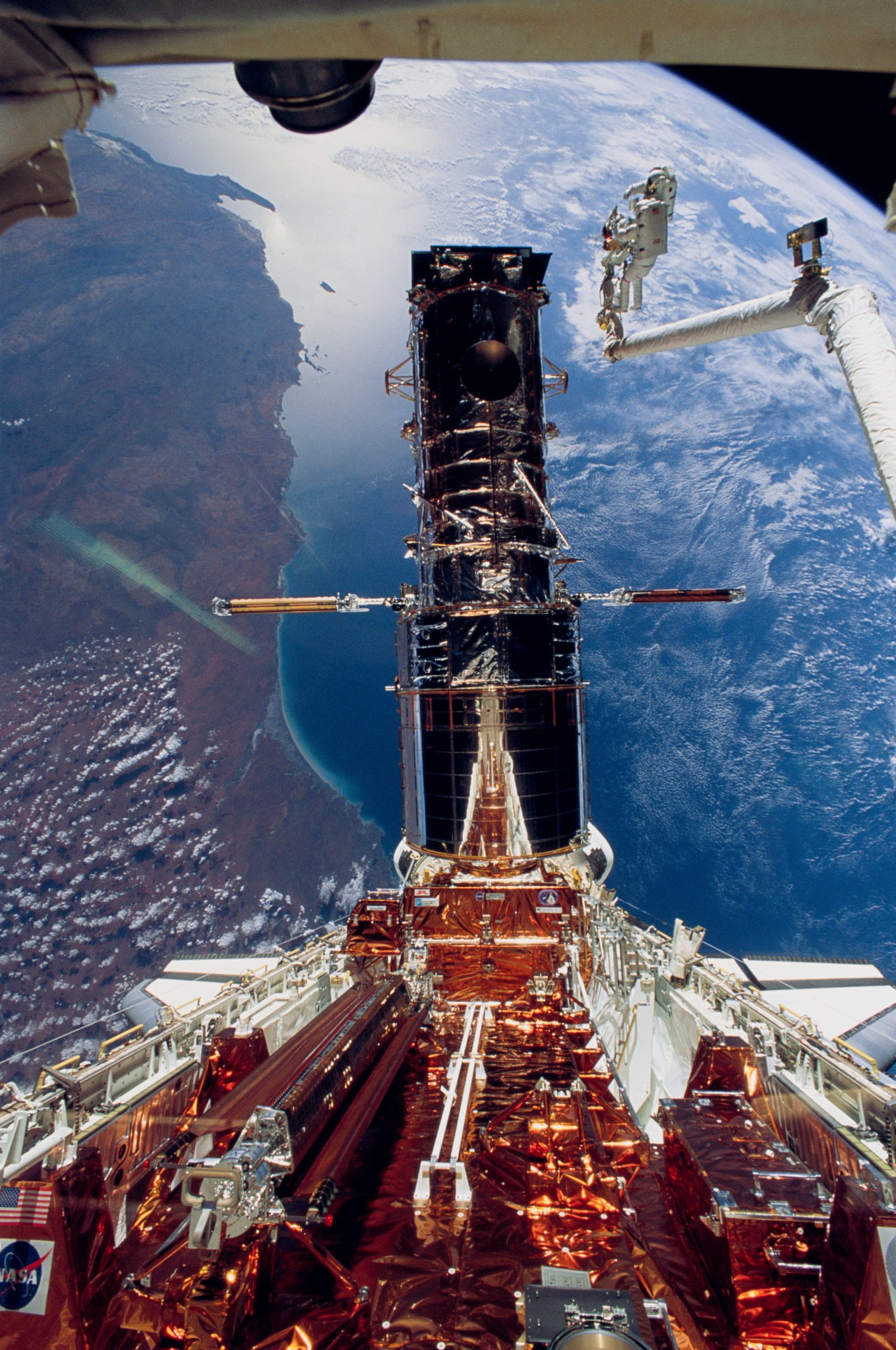
This week in 1993, the space shuttle Endeavour, mission STS-61, landed at NASA’s Kennedy Space Center following a successful 10-day mission to service the Hubble Space Telescope. Here, astronauts Story Musgrave and Jeffrey Hoffman wrap up the final of five spacewalks to perform a variety of servicing tasks. NASA’s Marshall Space Flight Center was responsible for the overall design, development, and construction of the observatory. The NASA History Program is responsible for generating, disseminating, and preserving NASA’s remarkable history and providing a comprehensive understanding of the institutional, cultural, social, political, economic, technological, and scientific aspects of NASA’s activities in aeronautics and space. For more pictures like this one and to connect to NASA’s history, visit the Marshall History Program’s webpage. (NASA)





























